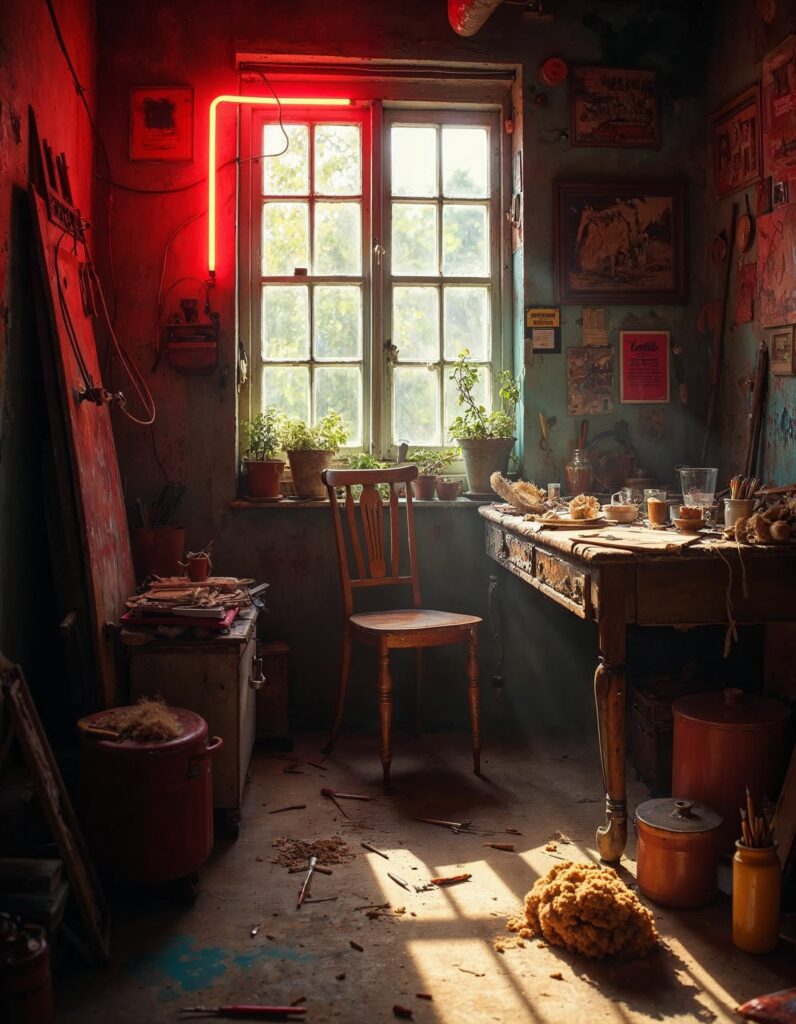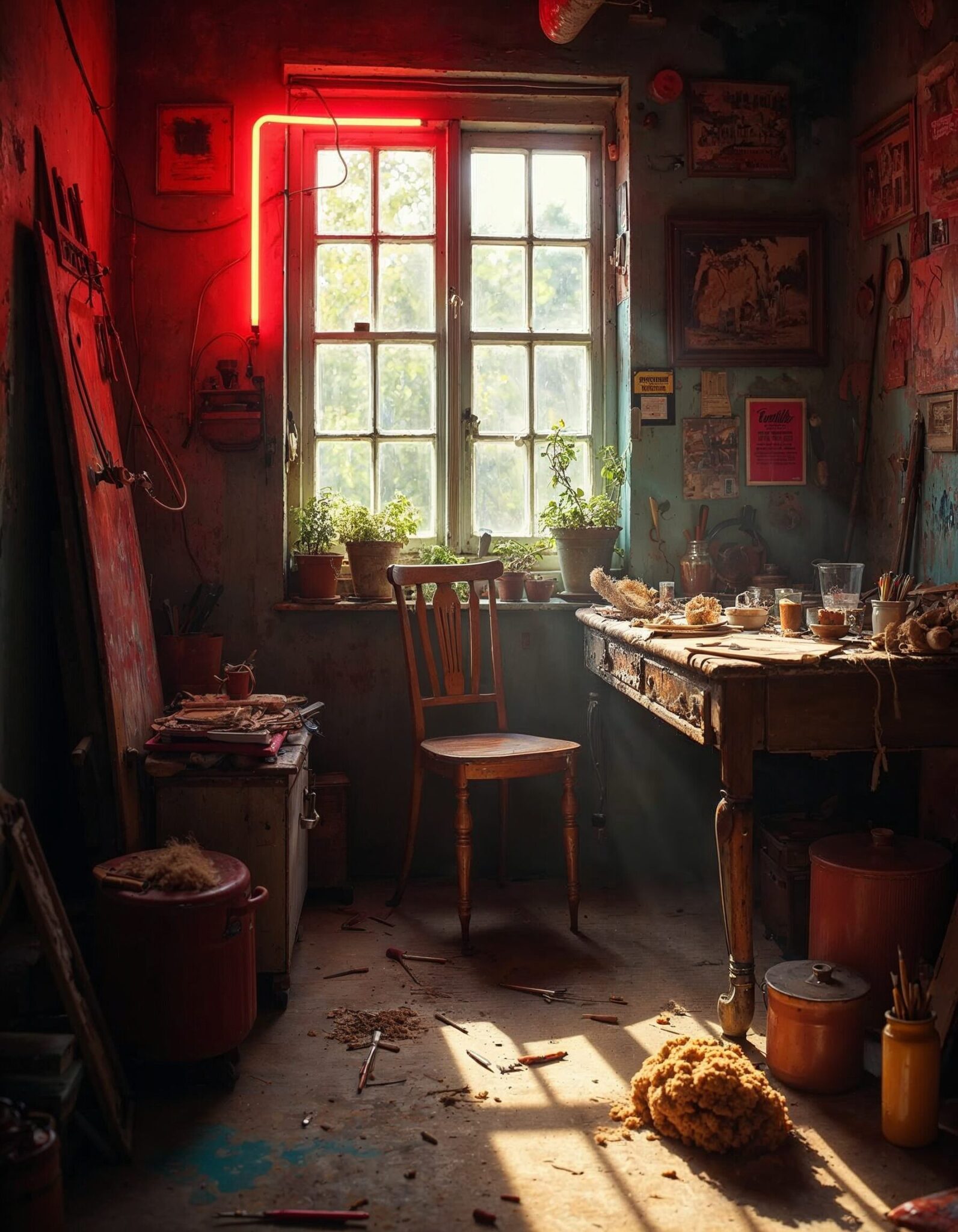How to Prepare Your Art Studio for Painting: Tips and Tricks for the Most Productive Setup
Creating the perfect environment for painting can significantly enhance your creativity and productivity. Whether you’re an experienced artist or just starting out, organizing your art studio properly ensures you have everything you need at your fingertips. In this blog post, we’ll guide you through essential tips and tricks to help you set up your art studio for maximum efficiency and enjoyment. Let’s get started!
Why a Well-Organized Art Studio Matters
An art studio isn’t just a space; it’s your creative haven. A cluttered or poorly setup studio can hinder your creative flow and disrupt your process. On the other hand, a well-organized acrylic painting workspace can make all the difference in producing artwork with ease and joy.
1. Choose the Right Space for Your Art Studio
Where you set up your studio is crucial. Consider the following factors in deciding the best location for your art studio:
Lighting: Try to find a space with plenty of natural light. Natural light helps you see true colors and minimizes eye strain. If natural light isn’t an option, invest in daylight-balanced artificial lights that replicate a similar effect.
Ventilation: Proper ventilation is necessary when working with paints, especially acrylics and any mediums that release fumes.
Size: Ensure the room has ample space to accommodate your tools, easels, storage, and of course, your creative movement.
If you’re working in a small space, don’t worry! You can maximize your area with creative organization ideas, which we’ll discuss later.
Pro Tip: Dedicate your studio to painting only. This avoids interruptions and keeps your creativity focused.
2. Essential Tools and Furniture for Your Studio Setup
Every productive art studio includes a set of basic tools and furniture to organize your space and keep your workflow smooth. Here’s what you need:
Easel or Work Table: Depending on your preference, you’ll need either a sturdy easel for working upright or a large work table for flat surfaces.
Storage Solutions: Use drawers, shelves, or containers to store your supplies, like brushes, paints, and canvases. Label them clearly for easy access.
Comfortable Seating: An adjustable ergonomic chair can help you avoid back strain during long painting sessions.
Water Containers: Acrylic painting often requires water for brushes and thinning paints. Keep your water containers within reach.
Drop Cloth or Protective Mat: Use drop cloths or mats to keep your studio tidy and protect the floors from paint spills.
3. Organize Your Art Supplies
One of the most important aspects of setting up your art studio is properly organizing your tools and materials. Here are some painting productivity recommendations to streamline your workspace:
Group Items by Use: Keep frequently used supplies like your palette, paintbrush tools, and paints within easy reach. Store lesser-used items in labeled bins or drawers.
Brush Storage: Place brushes upright in jars or invest in a brush holder to protect their shape and make them easy to grab.
Paint Organization: Organize your acrylic paints by color or type. Using a storage rack for paints can save space.
Tool Placement: To maintain the flow of creativity, keep tools like palette knives, sponges, and stencils nearby for quick access.
Pro Tip: Rotate seasonal supplies. If you’re working on a project that requires specific tools, prioritize keeping those accessible and store others away for later use.
4. Create a Comfortable and Inspirational Environment
The ambiance of your studio matters. Decorating and personalizing it can motivate and inspire creativity. You might try:
Personal Touches: Hang your finished paintings or inspirational pieces to spur creativity.
Music and Sounds: Create a playlist or add a small speaker for background music to keep you focused.
Temperature Control: Keep the space comfortable with fans, heaters, or proper insulation.
Additionally, try to keep distractions out of your workspace. Limit non-art-related items in your studio to maintain focus.
5. Maintain a Clean Workspace
Tidiness isn’t just about aesthetics. A clean workspace is critical for efficient work, especially when using materials like acrylics that can dry quickly and permanently. Consider these tips:
Daily Cleanup Routine: At the end of each painting session, clean brushes, dispose of waste, and put tools back in their designated place. This prevents frustration and wasted time in the next session.
Acrylic Maintenance: Since acrylic paint dries fast, make sure to clean your palette regularly. Consider using a wet palette to extend the life of your paint.
Pro Tip: Keep a small vacuum or duster nearby to save time cleaning up dried paint or other remnants from your creative session.
6. Stock the Right Paintbrush Tools and Supplies
Having the right tools makes all the difference in painting productivity. When working on acrylic painting projects, ensure you have:
A wide variety of brushes, including detail brushes, flat brushes, and fan brushes.
Basic and specialty acrylic paints that allow you to experiment with color and texture.
A palette (glass, disposable, or wet palette) that suits your workflow.
Check out the unique paintbrushes and other tools available at URARTSTUDIO’s shop for professional-quality supplies to elevate your artwork.
7. Adopt Workflow-Friendly Practices
Your studio setup should support a seamless workflow. This includes:
Designating Zones: Create separate areas for painting, organizing supplies, and cleaning.
Prep Ahead: Before you start your session, set out everything you’ll need. This saves valuable time during your creative process.
For additional advice specific to acrylic painting workspaces, explore the painting tips section on URARTSTUDIO.
8. Learn and Evolve Your Setup
Every artist’s needs are different, so your studio setup should evolve with your preferences. Experiment with what works for you, and don’t be afraid to rearrange periodically.
If you’re unsure where to start, follow a step-by-step process to create your ideal acrylic painting workspace, like those found in the step-by-step painting instructions at URARTSTUDIO.
Conclusion: Elevate Your Creativity with a Well-Prepared Studio
An effective art studio setup is the foundation for productive and inspired painting sessions. With the right tools, organization strategies, and an inspirational environment, your creativity will flourish. Follow these tips to transform your studio into the perfect space for artistic expression and productivity.
For high-quality tools and resources, be sure to visit URARTSTUDIO’s shop and explore helpful painting tips. And if you’re looking to enhance your painting skills further, check out our step-by-step painting instructions for acrylic art projects!
#ArtStudioSetup #PaintingTips #AcrylicPaintingWorkspace #OrganizeArtStudio #PaintingProductivity #PaintbrushTools




Leave a Reply
You must be logged in to post a comment.